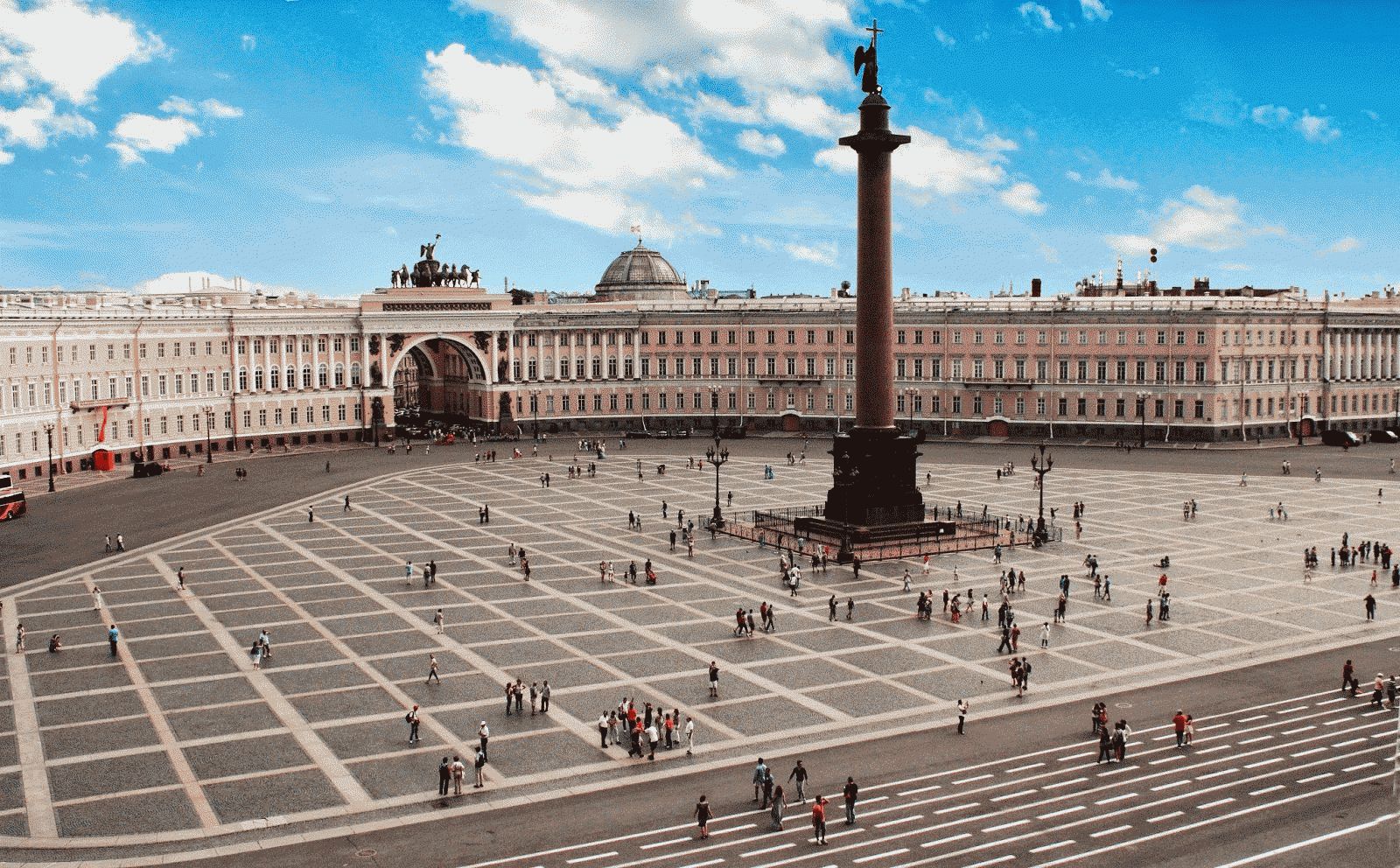Страна:
Регион:
Другие названия:
Значение:
Время визита:
Цена:
бесплатно
Почему Топ:
Главная площадь с ансамблем дворцов и памятников.
Описание:
The main square of St. Petersburg. The ensemble of the Square includes: the Winter Palace (Hermitage), the semicircle of the General Staff building with the Triumphal Arch, the Alexander Column.
In 1704, Peter I founded the Admiralty shipyard-fortress on the banks of the Neva, in front of which they organized a space with an embankment for artillery maneuvers in case of an enemy attack from land. Over time, the shipyard lost its importance. The place for military operations fell into disrepair and was overgrown with grass, which is why it received the name “Admiralty Meadow.” Until the middle of the 18th century, herds were grazed on it, oats were planted, and even small game was hunted.
But in 1753, the architect Bartolomeo Rastrelli included this territory in the design of the Winter Palace. Under Catherine II, the square in front of the façade of the Winter Palace began to be called the Palace Square. The Small Hermitage pavilion and the building of the Free Economic Society appeared here, and the square itself became the venue for celebrations.
Palace Square acquired its modern appearance in the first half of the 19th century, when Alexander I, in honor of the victory over Napoleon, started a grandiose reconstruction. The work was carried out under the direction of the architect Carl Rossi. The formation of the architectural ensemble was completed under Nicholas I.
From 1918 to 1944, the landmark bore the name of the revolutionary Moisei Uritsky.
Over the course of two centuries, the main square of the capital of the Russian Empire became the scene of many historical events. Here, twice — in 1879 and 1880 — an assassination attempt was made on Alexander II, and both times the emperor survived. In January 1905, on Palace Square, tsarist troops shot a column of workers who were going to Nicholas II with a petition to improve working conditions — the episode went down in history as Bloody Sunday. And finally, in October 1917, Palace Square became the epicenter of the revolution: during the storming of the Winter Palace, the Bolsheviks overthrew the Provisional Government and proclaimed the establishment of Soviet power.
Категории:
Метки:
Веб-камера
Темы:
Зачем посещать:
Интерес:
Физподготовка:
Лучшее время:
Доступ:
Roads:
Facilities:
Attendance:
Emergency:
112
Info:
Safety:
Safely
Clothing:
Seasonable
Connection:
Ok
Resources:





